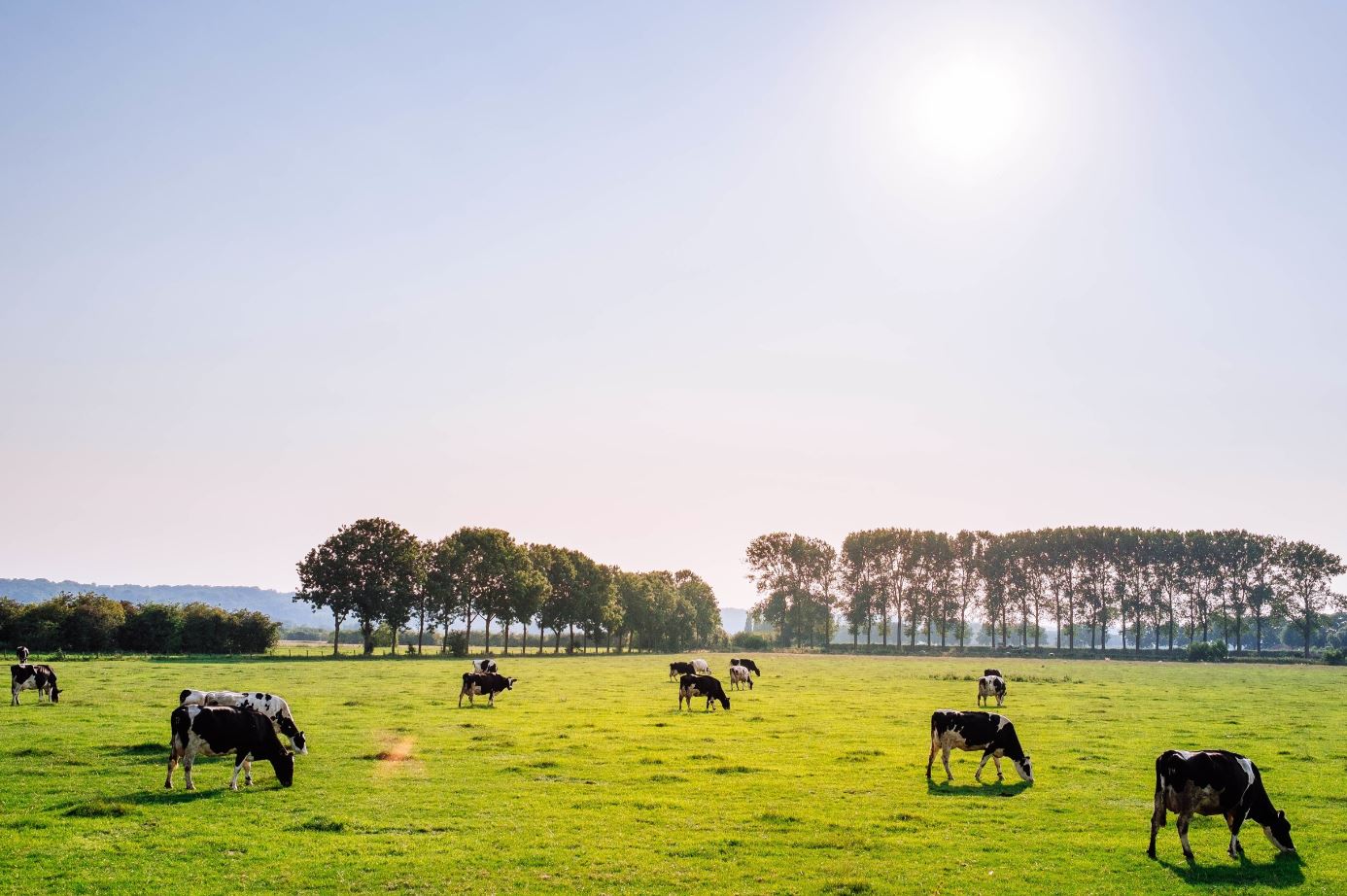Red meat and livestock farming in general has had more than a decade of bad publicity on its environmental footprint.
It all started in 2006 when the UN published its groundbreaking Livestock’s Long Shadow report that concluded the sector was responsible for 18 per cent of global greenhouse gas emissions – a figure it later revised downwards to 14.5 per cent.
The finger of blame has largely fallen on methane emissions from ruminants (cows, sheep and lambs), which account for more than one-third of all emissions from agriculture in the EU.
Some have argued that grazing animals can actually help reduce greenhouse gas emissions by stimulating grass to be more productive and put down deeper roots, drawing carbon out of the atmosphere and storing it in the soils.
This is especially pertinent for red meat production. According to a study published in Nature, 40 per cent of the world’s cereal grain is feed to ruminants, mainly cattle. Unlike pigs, poultry and humans, ruminants can graze pastures and eat hay, silage and high-fibre crop residues that are unsuitable for human consumption.

In other words, cattle don’t need to eat grain and use up land that could otherwise be used for growing food crops for humans. Instead, they can consume grasslands, which has the added benefit of holding much more carbon than cropland. And, if it is well-maintained, more biodiversity too.
So could grass-fed livestock hold the key for guilt-free consumption of red meat for climate conscious consumers?
Research at ten National Trust farms, published in 2012 showed that while the carbon footprint of grass-fed and conventional farms were comparable, the carbon sequestration contribution of well-managed grass pasture on the less intensive systems reduced net emissions by up to 94 per cent. In some upland areas, they found, it even resulted in a carbon ‘net gain’.
While growing grass absorbs and stores carbon, the biodiversity benefit comes from the ruminants being kept on permanent pasture with a blend of different types of herbs, clover and not just basic grass.

In the US, there has been ongoing research of a grass-fed beef farm in Georgia called White Oak Pastures. The farm has been found to be removing 3.5 kilograms of carbon dioxide from the atmosphere for every kilogram of beef it produces, according to a life-cycle analysis by Quantis published earlier this year.
The same analysis found that the beef at White Oaks Pasture had a carbon footprint 111 per cent lower than beef produced on a conventional US farm. As you’d expect from a livestock farm, most of its emissions came from cow belches, manure emissions and farm activities, but these were more than offset by carbon sequestered by the soil and plants.
The research has been conclusive enough for some to argue that grass-fed beef could help red meat escape the stigma of extremely high carbon emissions. However, the researchers studying White Oak Pastures have admitted that there remained a challenge on how to ensure the long-term storage of soil carbon captured.
Other researchers remain sceptical and say the evidence currently available does not yet prove the climate benefit of grass-fed meat.
While the grazing of grass-fed animals can boost the sequestration of carbon in some locally specific circumstances, that effect is time-limited, reversible, and at the global level, substantially outweighed by the greenhouse gas emissions they generate, argued a major report published in 2017.
The report, ‘Grazed and Confused’, concluded that grazing livestock were still net contributors to climate change.
“Rising animal production and consumption, whatever the farming system and animal type, is causing damaging greenhouse gas release and contributing to changes in land use,” said report author Dr Tara Garnett, from the Food Climate Research Network at Oxford University.
“Ultimately, if high-consuming individuals and countries want to do something positive for the climate, maintaining their current consumption levels but simply switching to grass-fed beef is not a solution. Eating less meat, of all types, is,” she said.

While grasslands may play an important role in maintaining and enhancing biodiversity and acting as a carbon sink, ultimately we’ll still need to significantly reduce meat production if we want to meet climate targets, argues Hannah van Zanten, an assistant professor in animal production systems at Wageningen University.
“The level of meat production that might be sustainable from a climate or biodiversity perspective might be lower then what is sustainable from a land and resource-use perspective,” she says.
In light of the current impasse over the value of grazing livestock, Greenpeace has argued that the best thing consumers and producers can do is to switch to eating grass-fed meat, and less meat overall.
“If Europe produced and consumed exclusively grass-fed livestock, we’d be a long way towards producing and consuming less and better meat and dairy in line with what science tells us is necessary to protect nature, the climate and our health,” Greenpeace agricultural campaigner Marco Contiero has said.
Many people in the UK are enjoying trying to switch away from meat-centric diets. It doesn’t mean giving up meat altogether, just not at every mealtime, or even every day. While the scientific evidence on grass-fed livestock remains unclear, reduction in consumption is one certain contribution we can make.










The report, ‘Grazed and Confused’, concluded that grazing livestock were still net contributors to climate change.
‘While the scientific evidence on grass-fed live stock remains unclear’
Eh? What?
Elsewhere in the text it uses the example of the US beef farm that’s a net carbon sink, even when cow farts are taken into account. The fact is it’s very complex with numerous unanswered questions and thousands of working parts and some people are acting as if it’s settled.
Greenpeace seems to have about the right bead on this IMO.
Joined up thinking and the taking into account of ALL factors pertaining to an issue would be valuable assets to consider before sweeping statements of any kind are issued, then there wouldn’t be so much confusion or back-tracking. Nothing is ever black or white, there are always shades of grey.
Locally produced food – meat of vegetable – is the way to go, so I do feel for those people who live in cities and large towns, where choice can be limited.